The macOS operating system is basically equipped with a relatively simple but clear disk manager, with which you can easily free up space on your Mac or activate certain functions that help save space. However, as far as further Mac management is concerned, the possibilities end here. But this certainly does not mean that there are no comprehensive applications with which you can manage your Apple computer. On the contrary, there are really countless of them. Some are free, some are paid, some are reliable, and some are not. In this article, we will look at the great Sensei app, which I have been personally testing for a few days now and I thought I had to share it with you.
It could be interest you

Sensei catches your attention at first glance
I came across the Sensei app by accident after looking for a simple app that can display temperatures and other cooling information on the latest M1 Macs. At first glance, the application caught my attention, mainly due to its simple and modern user interface, which could be envied by many applications from global developers. But after installing Sensei, I was really surprised by this application, because it can do much more than just display temperatures and fan speeds. Most of you are probably familiar with the software called CleanMyMac X, which is designed for the complete management of Apple computers. Sensei is the perfect competition in this case, offering a ton of different features already, and the list will expand even more in the future.
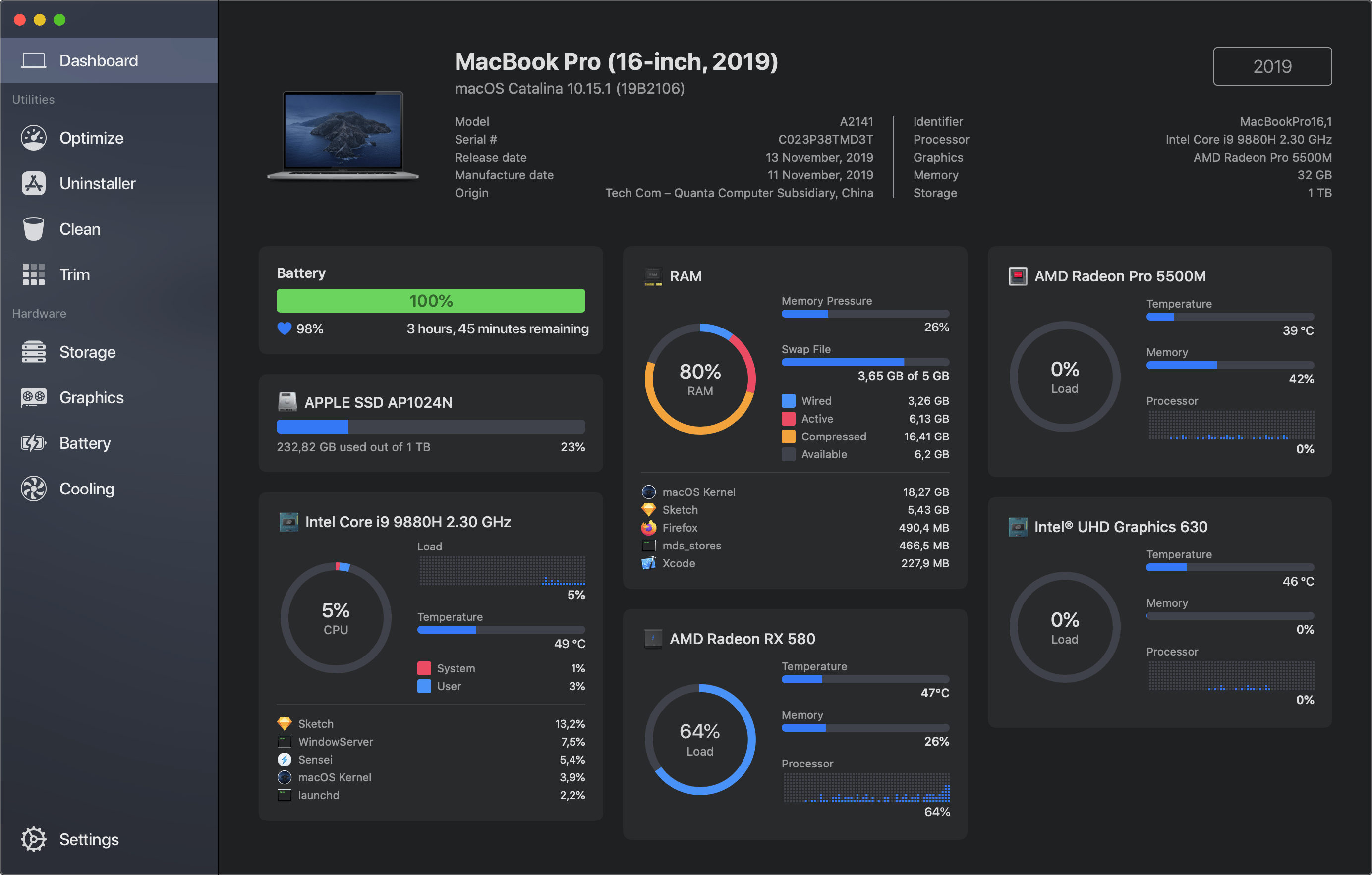
Dashboard – a bulletin board where you can find everything important
After you launch Sensei for the first time, as with virtually any other app, you need to give it access to various services. First, it was necessary to install the expansion package, and then allow access to the data on the disk. After performing these actions, you will find yourself on a perfectly processed overview of your device - this is the first item in the menu called Dashboard. Here you will find a summary of the most interesting data about your Mac. Specifically, these are complete specifications, i.e. model designation, serial number, date of manufacture and more. Below, in the blocks, there is information about the state of the battery and SSD, there is also a representation of the load on the processor, graphics accelerator and RAM memory.
Utilities or tools for optimization and management
The application menu, located on the left, is then divided into two categories - Utilities and Hardware. We will of course look at both of these categories, starting with the one called Utilities. Specifically, you will find the Optimize, Uninstaller, Clean and Trim columns in it. Optimize includes a simple tool that allows you to easily view and disable applications and services that start automatically after system startup. Within the Uninstaller, you will find, as the name already suggests, a simple tool that can be used to uninstall unnecessary applications, including created files. Next is the Clean column, in which you can view a list of data and folders that take up the most disk space and simply delete them. In Trim, you can then activate the function of the same name, which allows for better maintenance of the SSD disk. Thanks to this, the SSD is able to work at full performance and without unnecessary slowdowns.
Hardware or display all information
We move to the second category called Hardware. The first column here is Storage. Once you click on it, you will see a list of all connected drives - both internal and external. If you click on any drive, you can get information about it, in addition, you can simply run a performance test and view health and statistics data. In the next Graphics section, you will see the same layout as Storage, but instead of disks, here you will find graphics accelerators and connected displays and screens. After clicking on it, you can view all kinds of data in this case. The Cooling tab includes information about the temperatures of individual hardware components and the activity of the cooling system. Battery contains information about your battery - from health to temperature to other data, including the date of manufacture or serial number. In the lower left corner you will also find the Settings column, where there is a function for automatic updating or enabling functions that are currently in the beta testing phase.
záver
If you are looking for a comprehensive application that can manage your Mac, then Sensei is really ideal. After the first download to your device, you can activate a two-week trial period during which you have access to all features. Once these two weeks are up, you need to purchase the app. There are two plans to purchase the app – subscription and one-time payment. If you choose a subscription, you will pay $29 for a year, in the case of a one-time payment for $59, you will get all updates, new features and support for life. Sensei offers great features for both system optimization and display of all hardware information. I believe you will fall in love with Sensei as much as I did after the first launch.
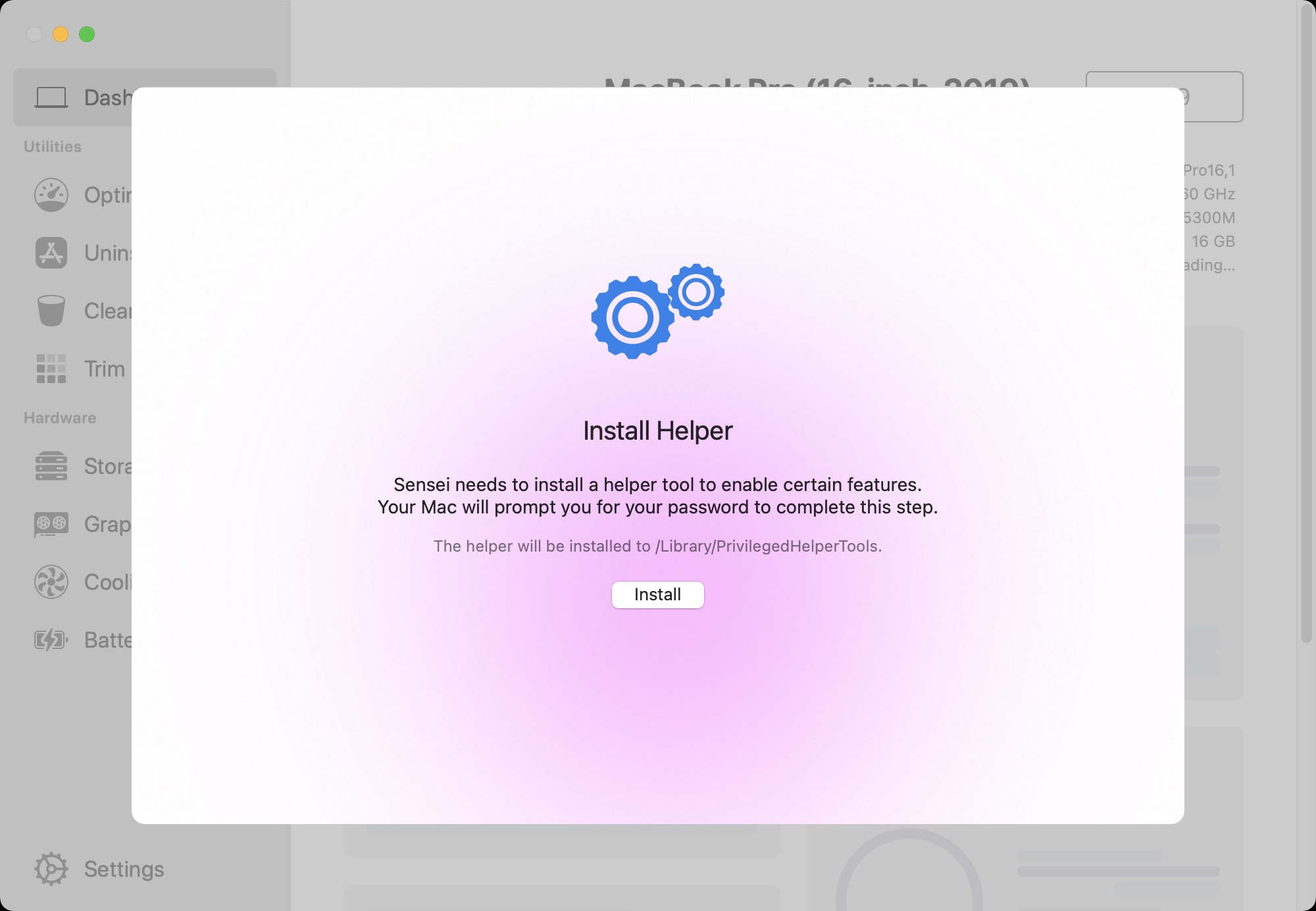
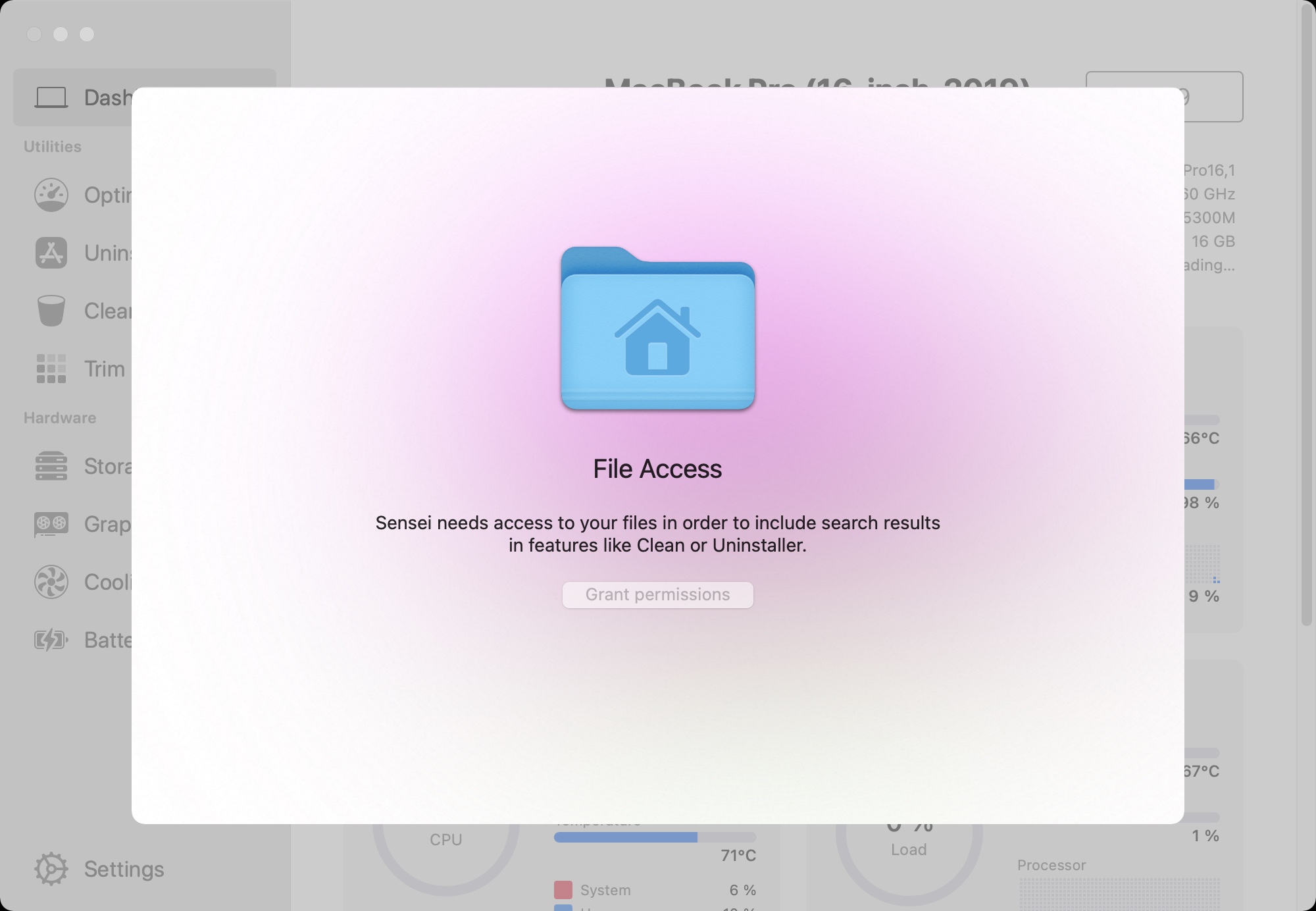

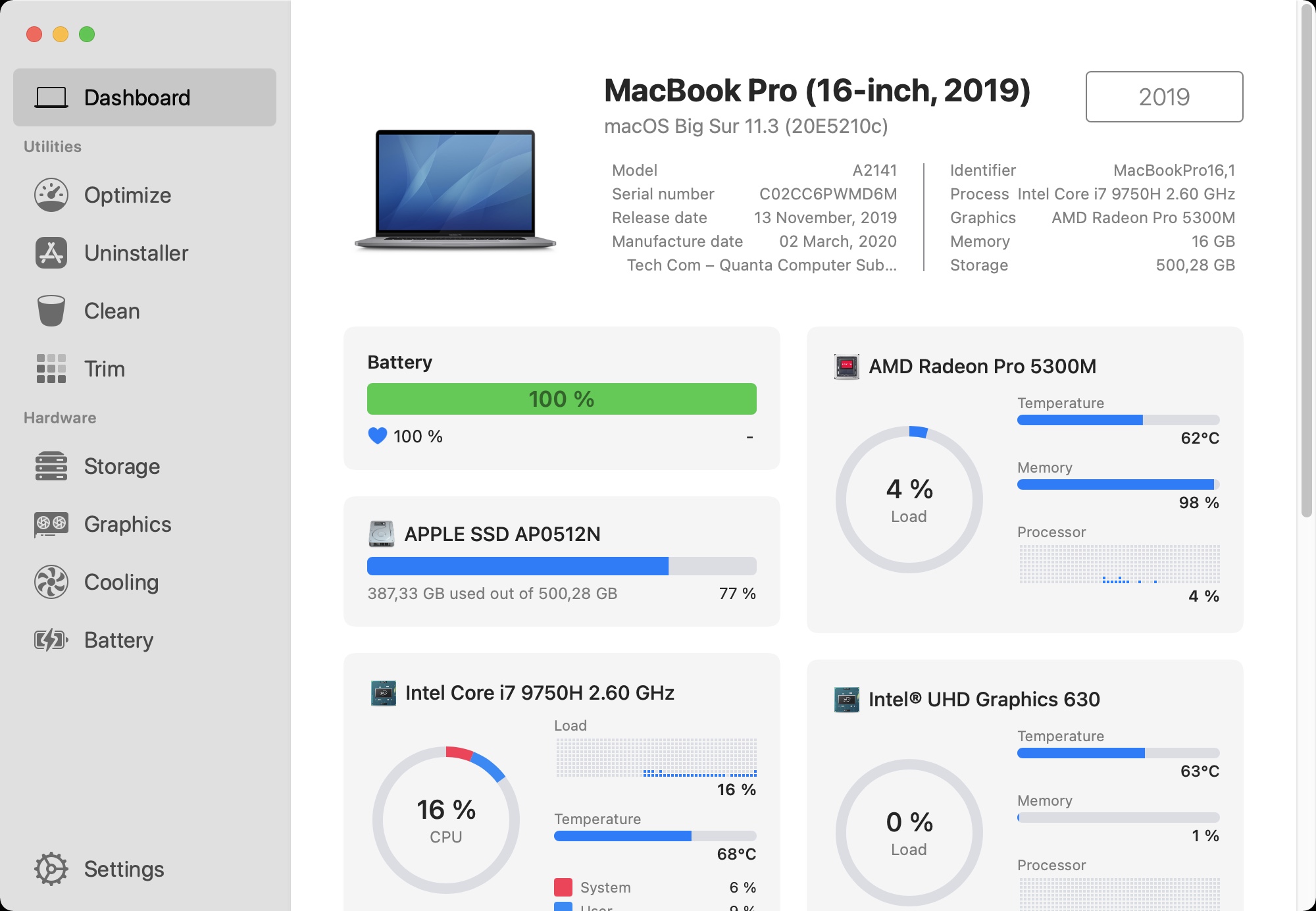
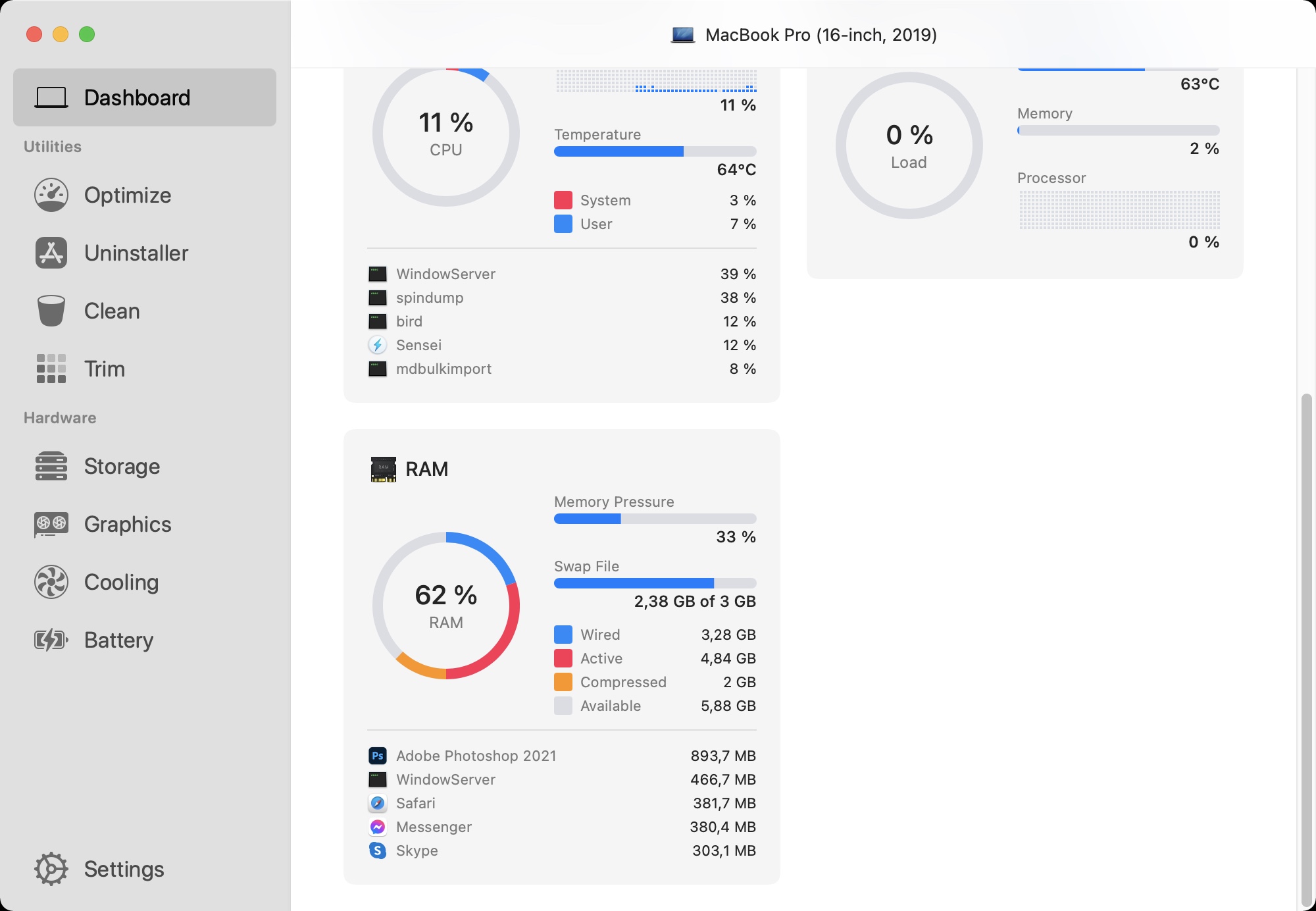
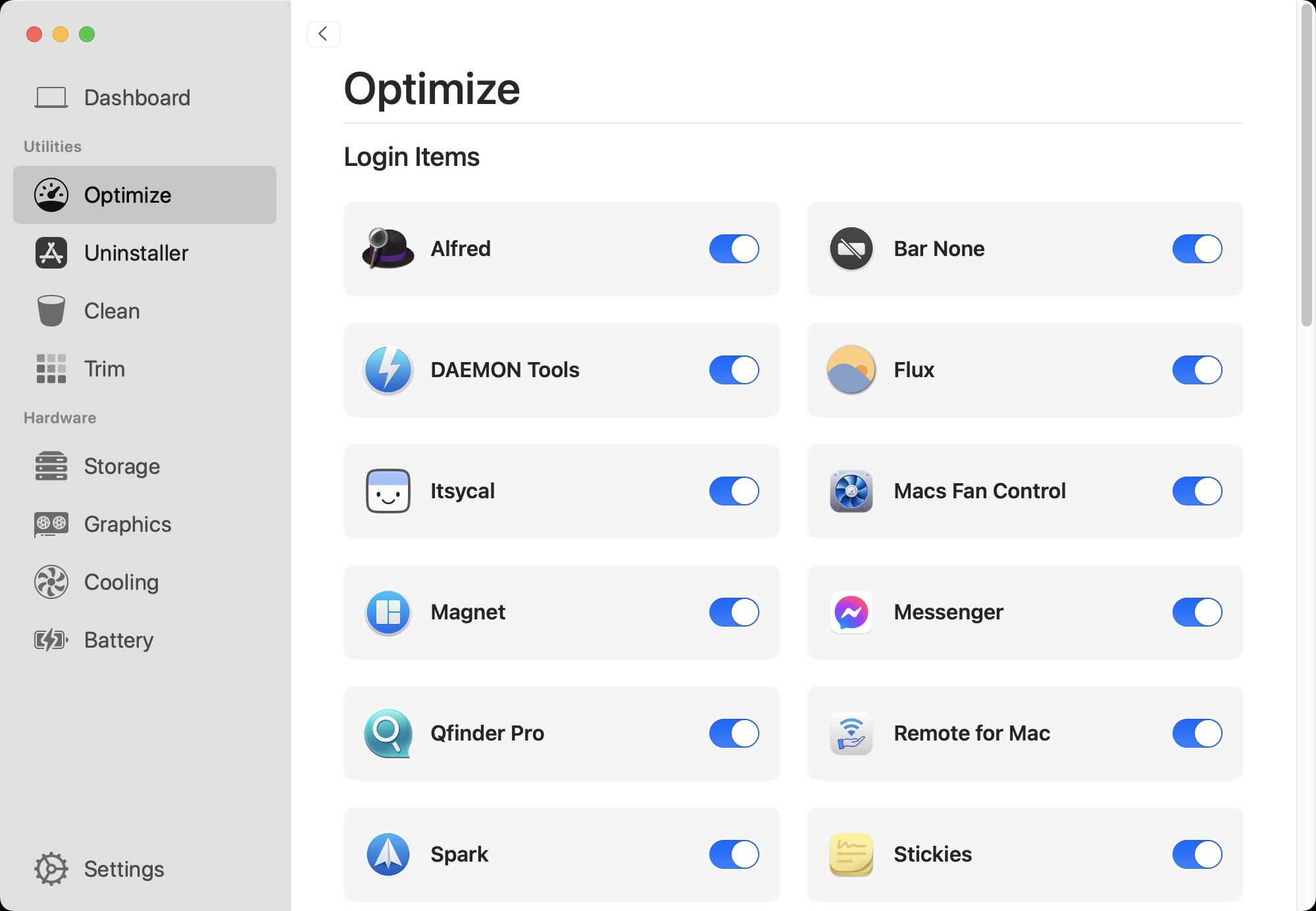
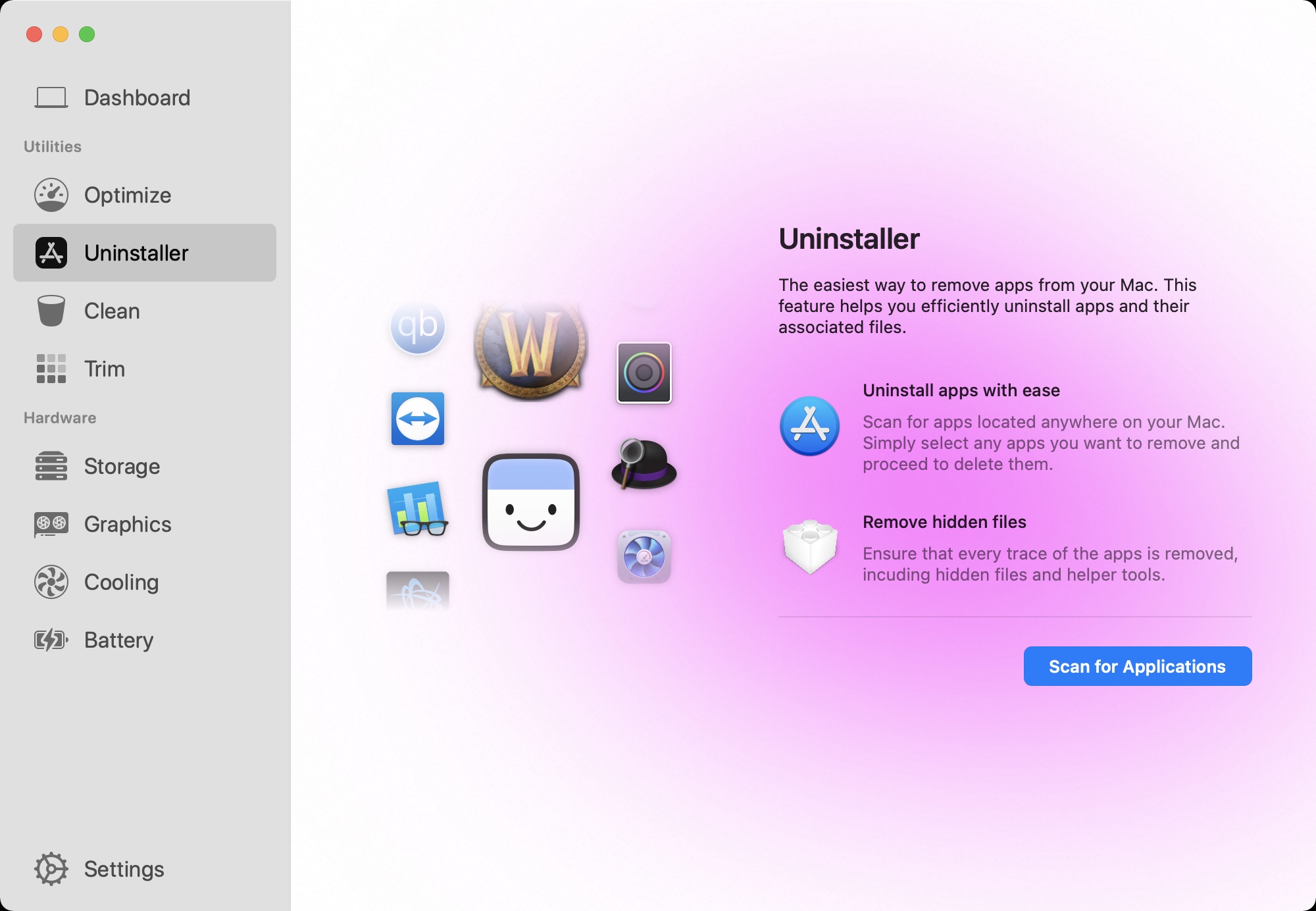
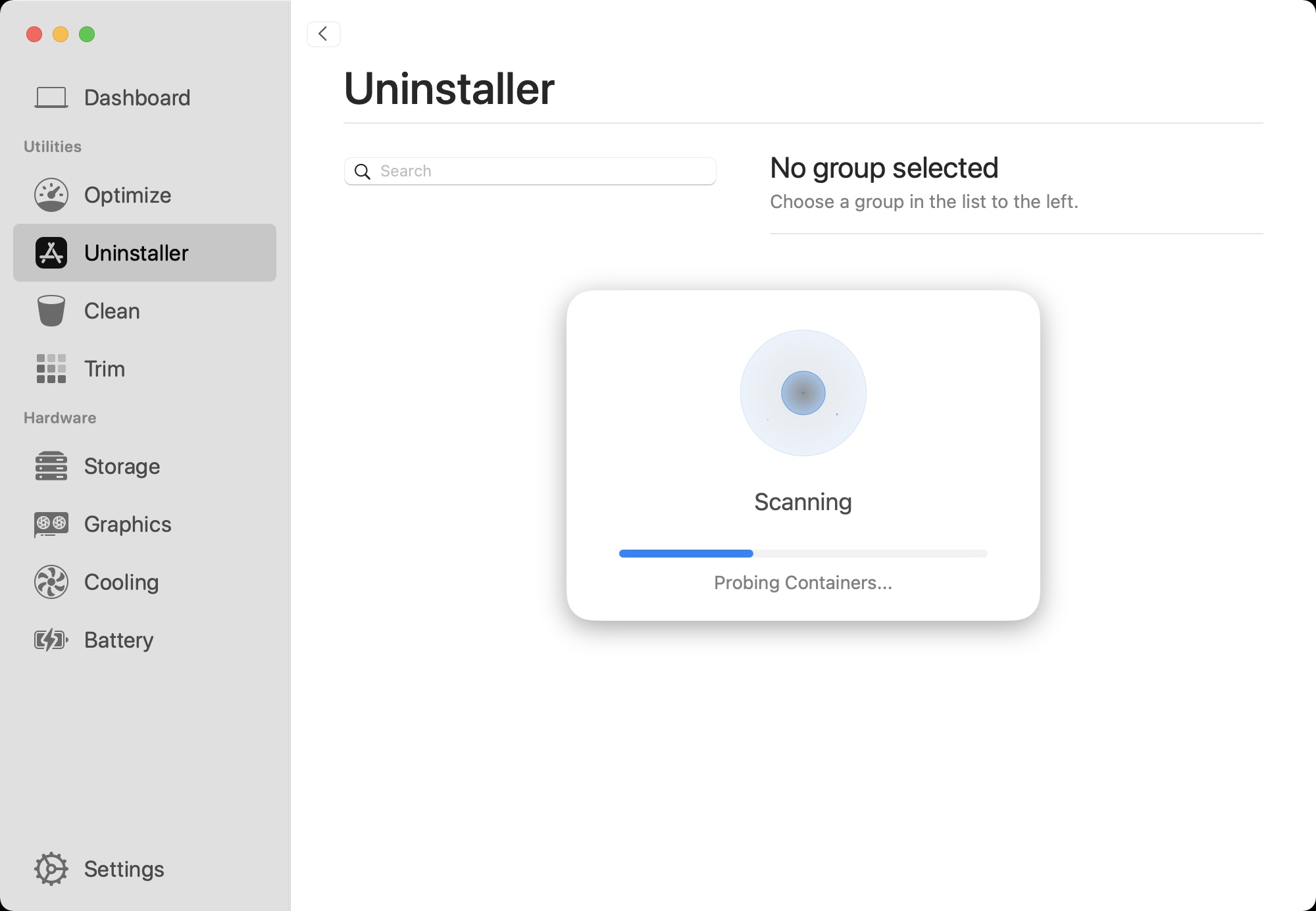
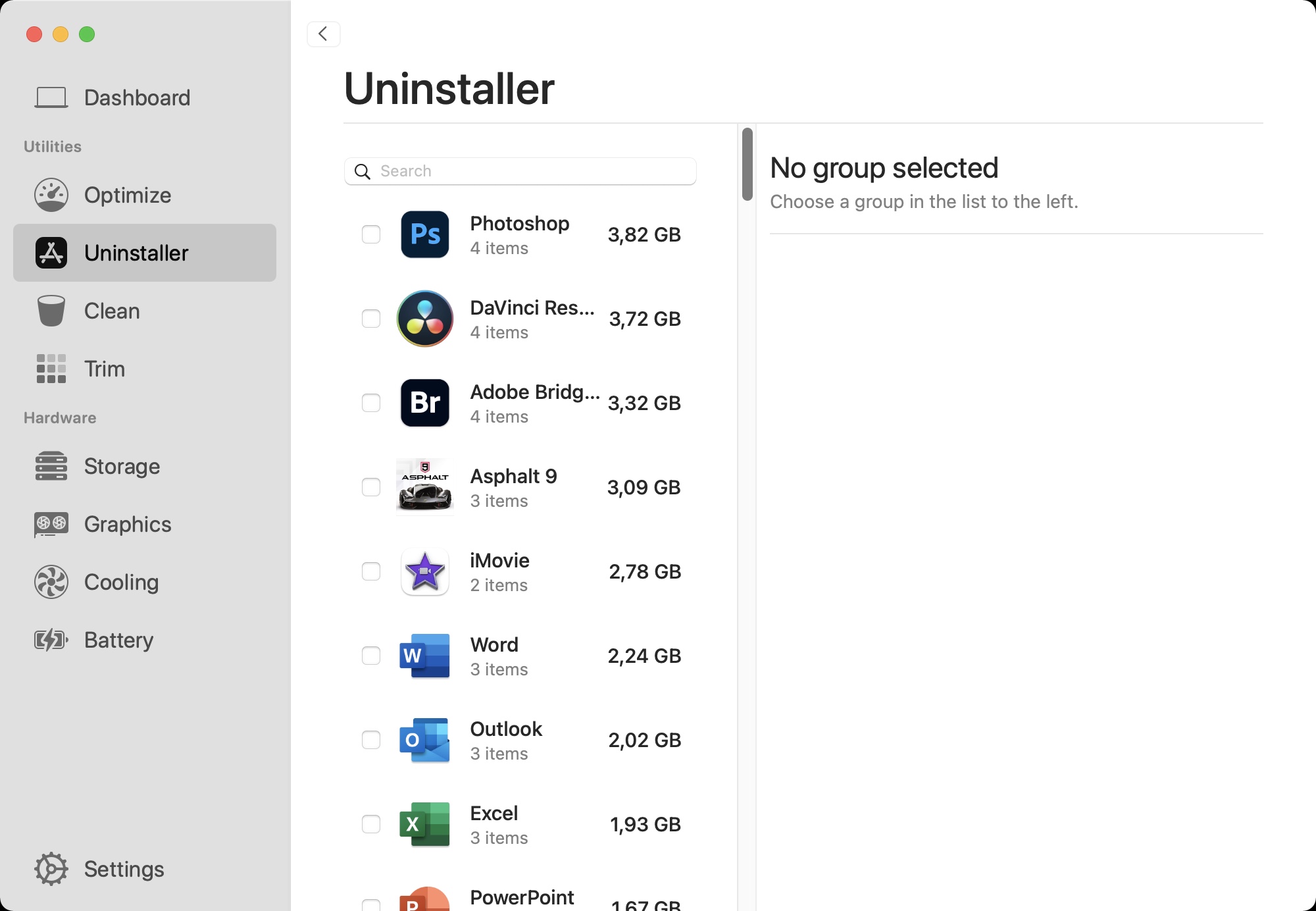
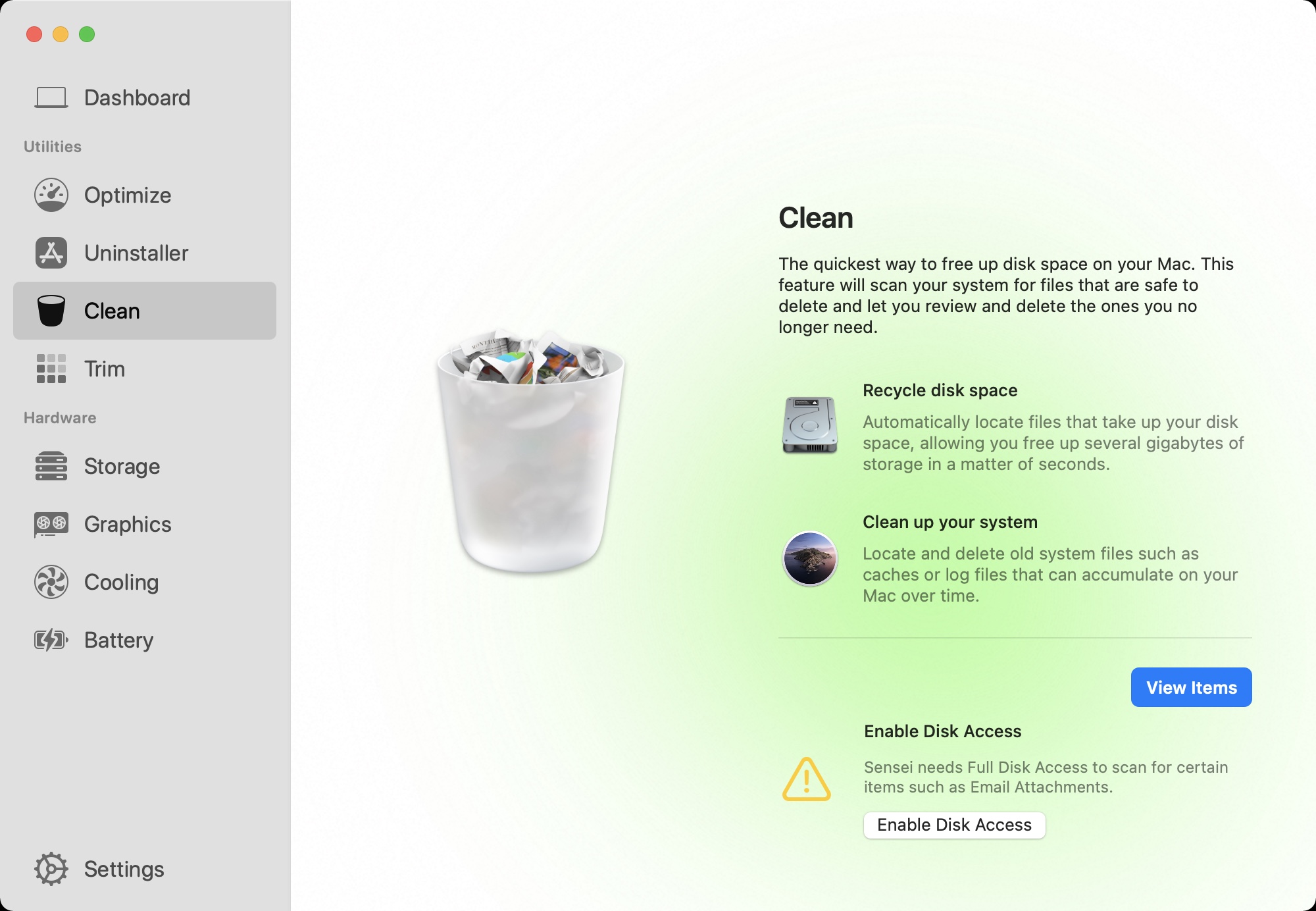
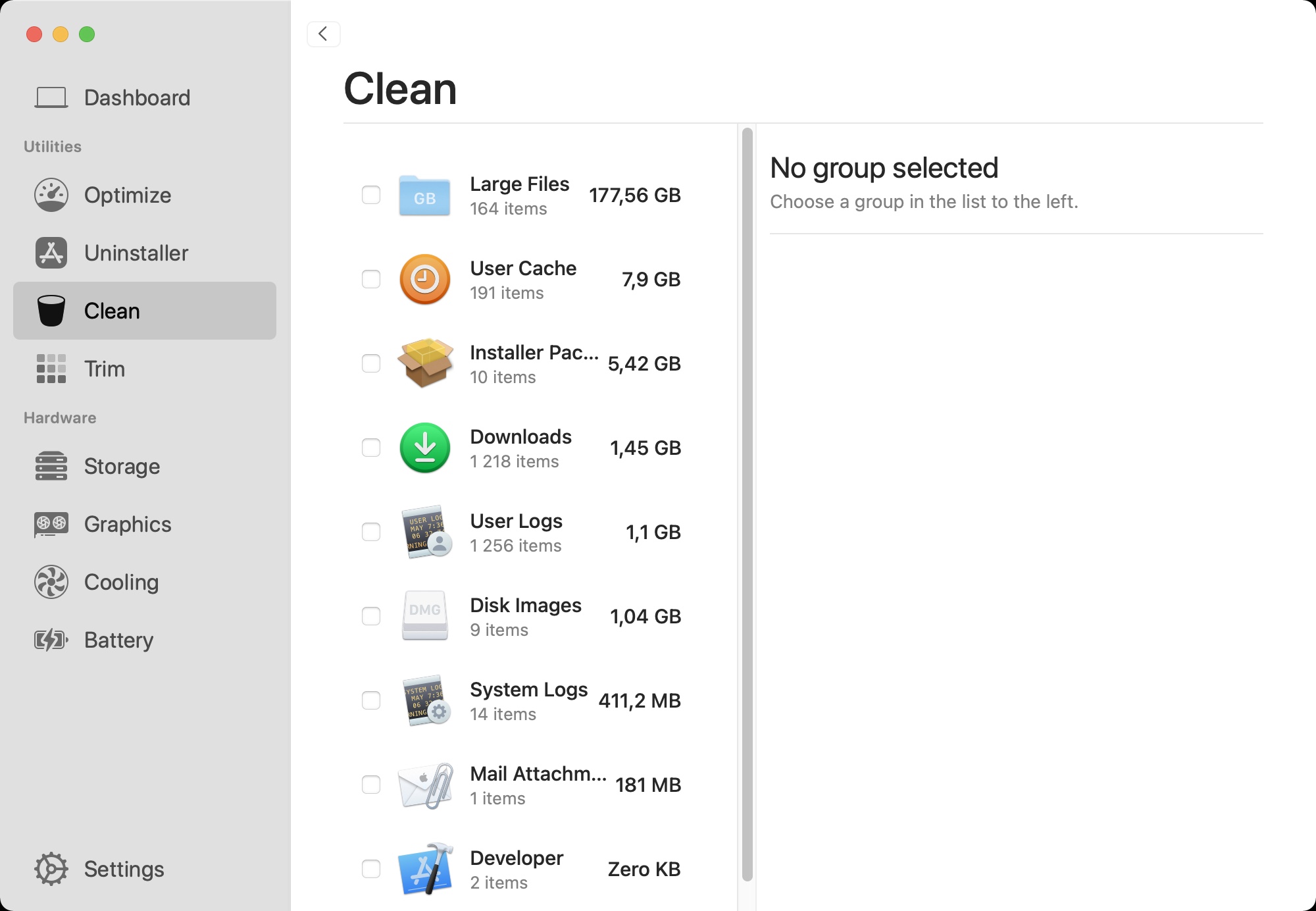

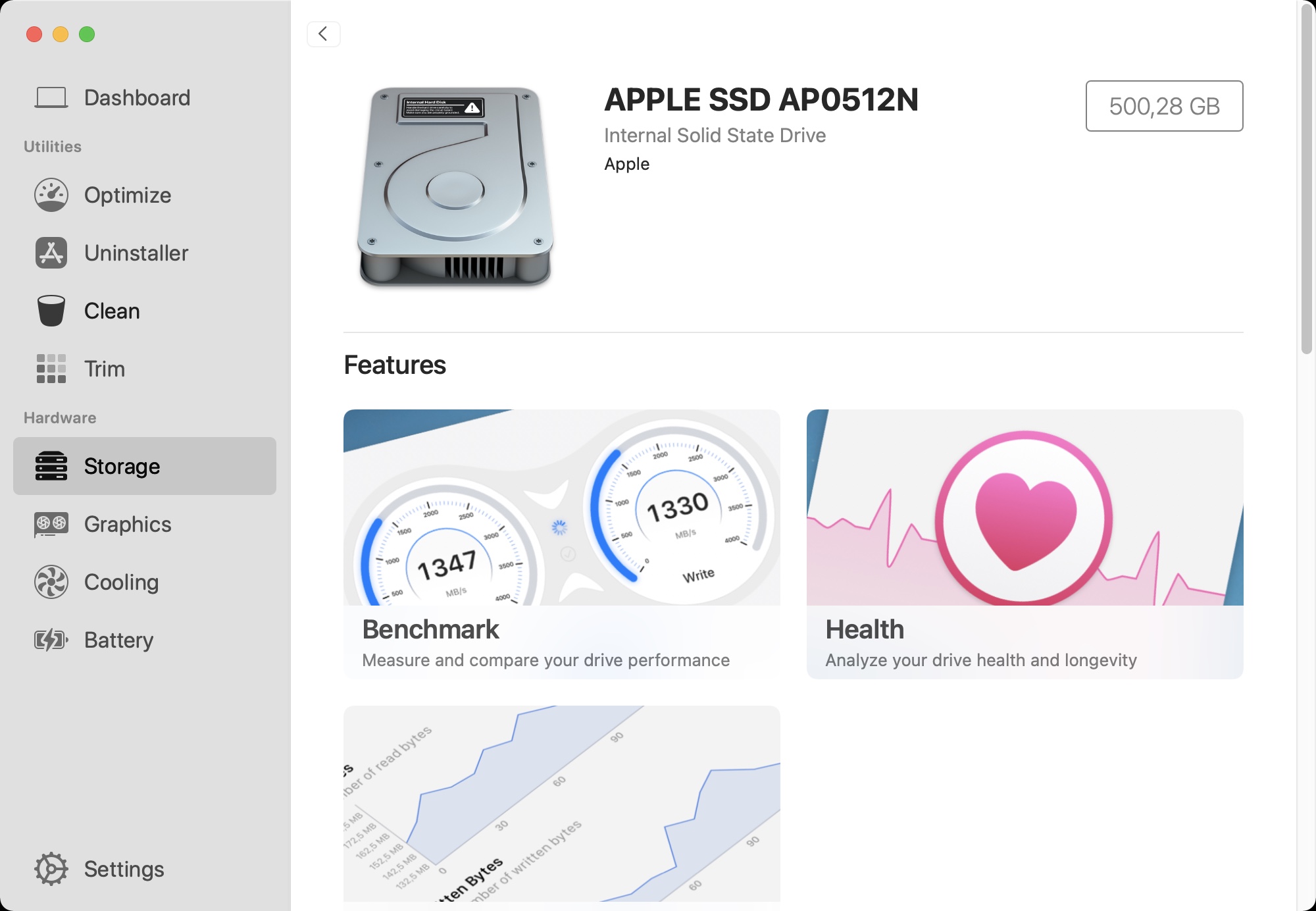
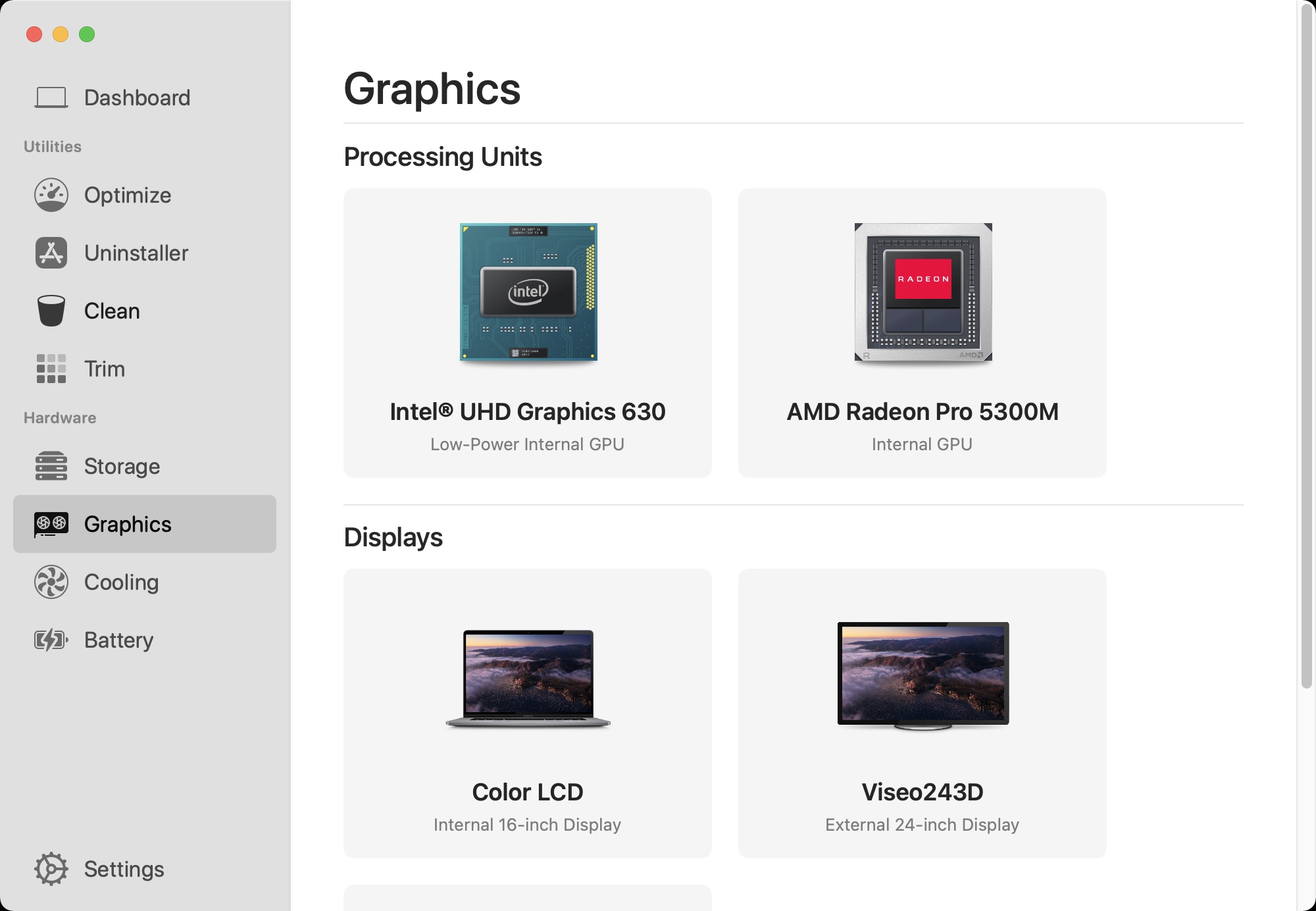
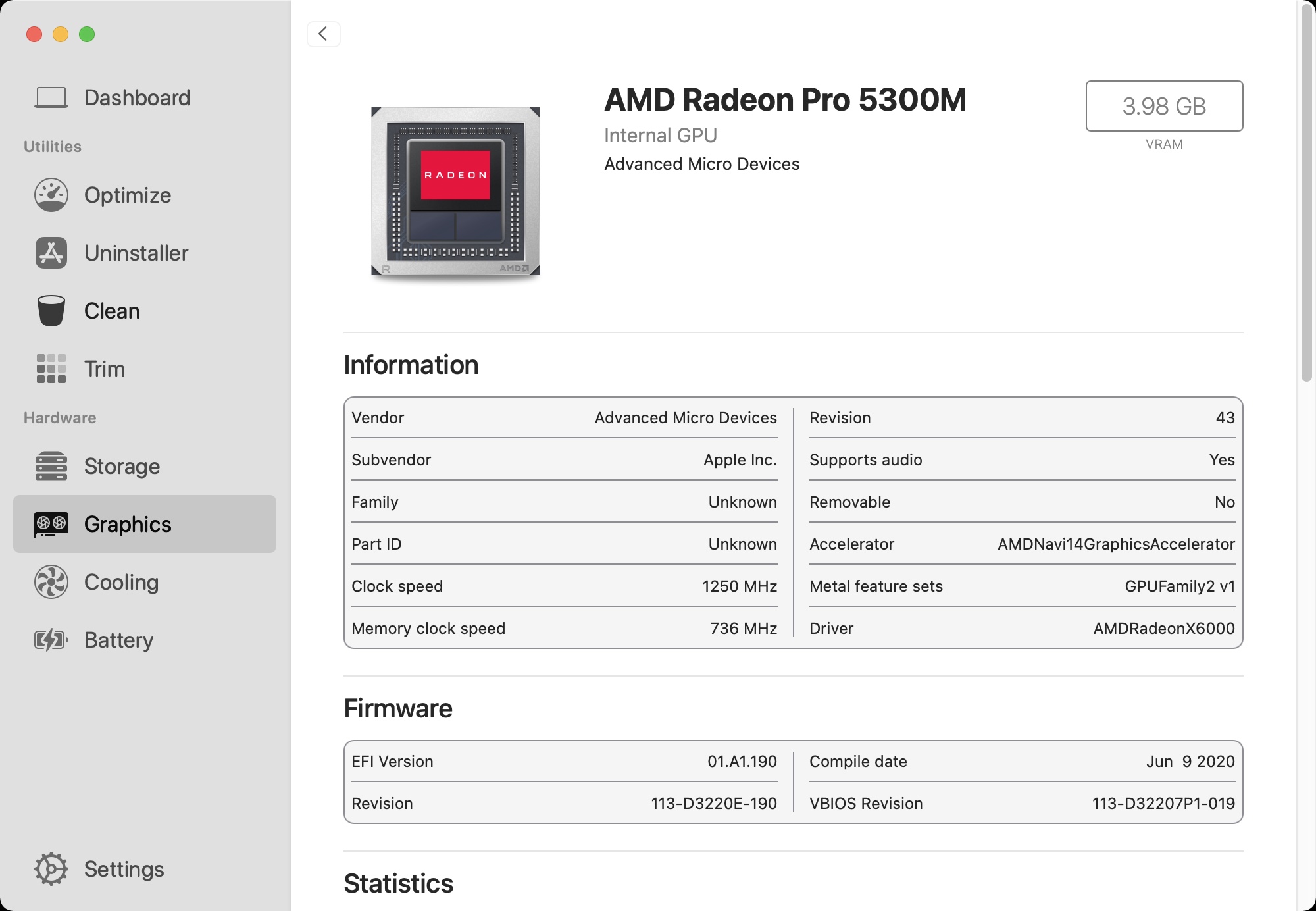
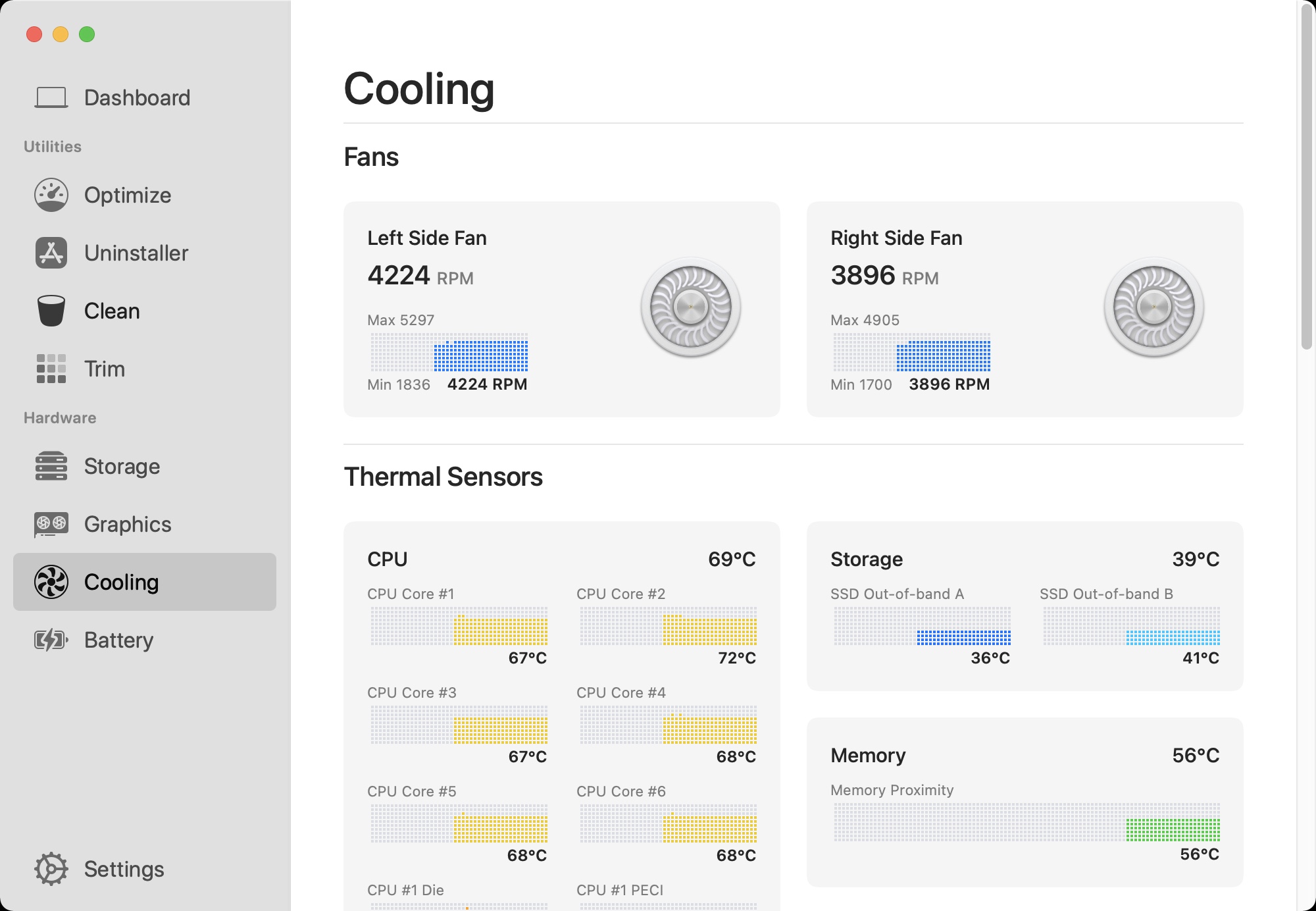
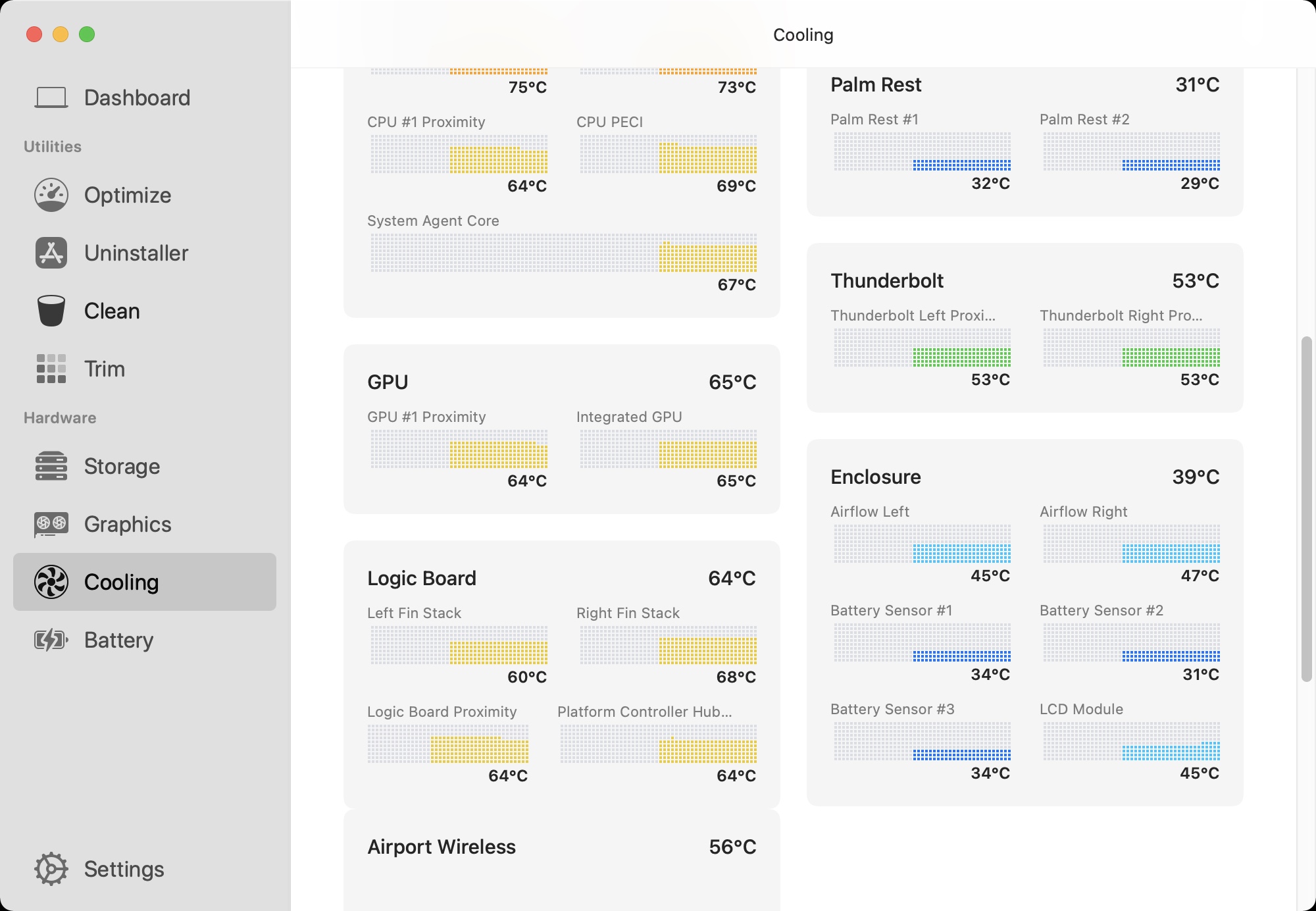

What is the difference between Sensei and Cleanmymac X? In other words, what is Sensei Better at?
I then tried the trial and I can say that it's great!
But in MCB Air with Apple SIlicon M1 does not work correctly. I definitely do not recommend MCB owners with this processor